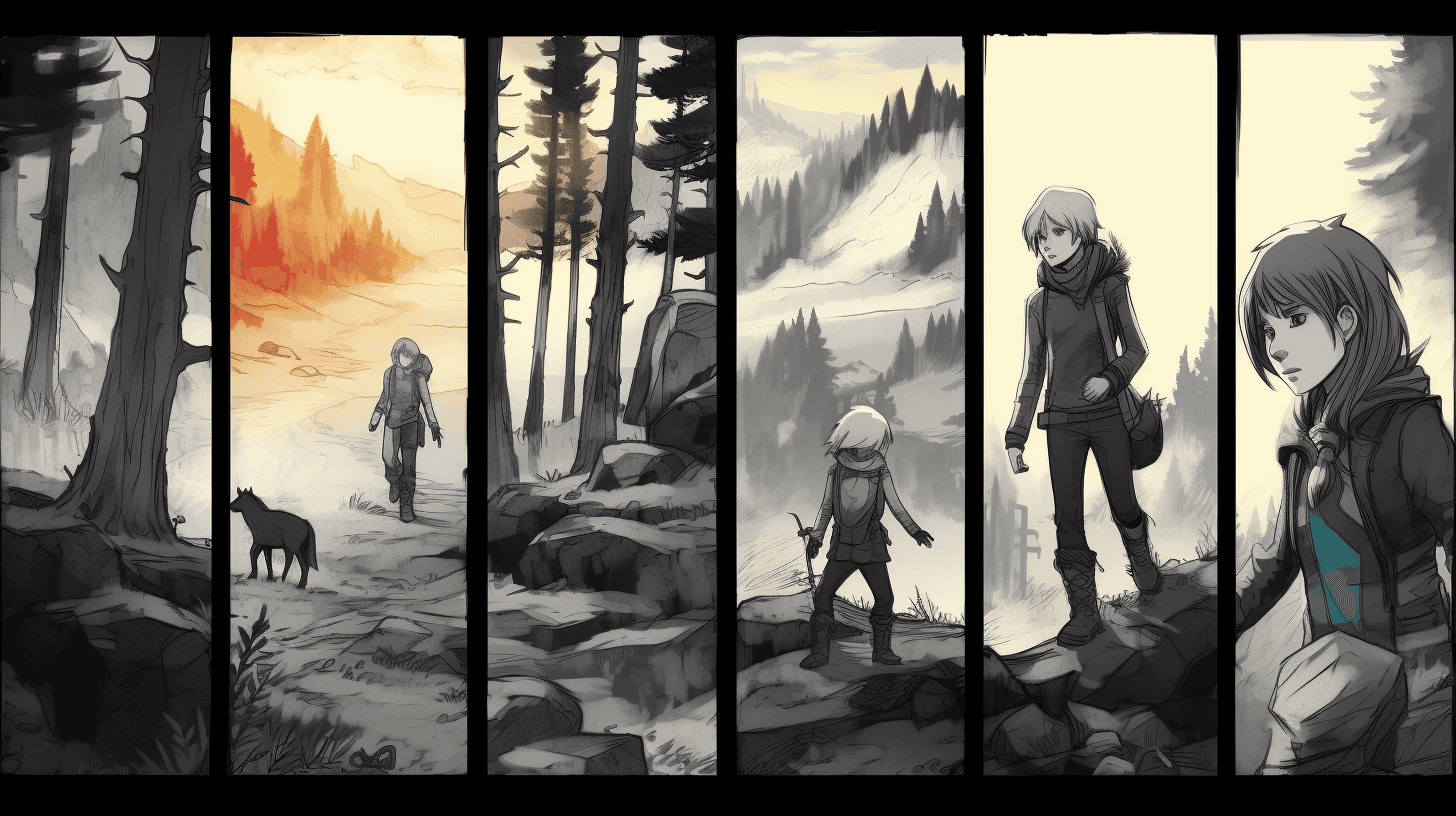Activities: Exploring Narrative Perspectives with Kids Using Stories

Today, we're focusing on a pivotal aspect that brings stories to life: narrative perspective. This means recounting tales from different viewpoints – your own, your pet's, a toy's, or even a pirate's! Ready to enrich your storytelling sessions with your kiddos? Let's dive in!
Why Learn About Narrative Perspective?
Just like watching a football match, where different spectators notice different details, stories can also be narrated from diverse perspectives. Understanding narrative perspectives can open up a whole new world for your child, fostering their empathy, enhancing their language skills, and stimulating their creativity.
Mastering the Art of Perspectives
First-Person Perspective
This perspective is intimate and personal. The story is told by a character who refers to themselves as "I," "me," and "myself" in the narrative. The first-person narrator relates the story as it's happening or retells a story that happened in the past. This point of view is commonly used to tell a personal story where the narrator is also the protagonist (or main character) of the story. There are four types of first-person narrators: The Protagonist, A Secondary Character, The Observer, and The Unreliable Narrator.
Example: "I tiptoed through the mystical forest, my heart pounding with excitement."
👉 Try this: Ask your child to narrate their day from their own perspective.
Second-Person Perspective
This is a unique perspective where the narrator speaks directly to the reader, making them a character in the story. This point of view is less common and is identified by the use of "you," "your," and "yourself," with the absolute exclusion of any personal pronouns (I, me, myself). The narrator is the reader, making it a tricky yet interesting narrative approach.
Example: "You tiptoe through the mystical forest, your heart pounding with excitement."
👉 Try this: Ask your child to imagine you are a character in their favorite story and narrate what you are feeling and doing in the tale.
Third-Person Perspective
This perspective is more detached and offers flexibility compared to the first and second-person perspectives. It can provide a more global view of what's happening in the story. A narrator tells the story, referring to characters as "he," "she," or "they." It can be divided into: Third Person Limited, Third Person Multiple, and Third Person Omniscient.
Third-Person Limited In this point of view, the narrator only knows the thoughts and feelings of one character.
Example: "The wolf prowled through the forest, anticipation for his cunning plan sending shivers down his spine."
👉 Try this: Ask your child to retell a familiar story, like "Little Red Riding Hood," from the wolf's perspective. Encourage them to focus on the wolf's feelings and thoughts as he interacts with Little Red Riding Hood and her grandmother.
Third-Person Omniscient In this point of view, the narrator knows everything about all the characters.
Example: "As the wolf prowled through the forest, anticipation for his cunning plan sending shivers down his spine. Little Red Riding Hood, meanwhile, was happily picking flowers, oblivious to the danger lurking nearby."
👉 Try this: Ask your child again to retell "Little Red Riding Hood," but this time from all the characters' perspectives. Encourage them to weave in the wolf's anticipation, Little Red Riding Hood's innocence, and the grandmother's surprise upon seeing the wolf.
Third-Person Multiple In this point of view, the narrator knows the thoughts and feelings of more than one character and can switch between their perspectives.
Example: "As the wolf prowled through the forest, his heart raced with excitement. Elsewhere, Little Red Riding Hood hummed a tune, her basket heavy with treats for her grandmother."
👉 Try this: Ask your child to retell "Little Red Riding Hood," but this time from the perspectives of both the wolf and Little Red Riding Hood. This requires them to switch perspectives throughout the story, capturing the thoughts and feelings of each character as they experience the story's events.
FAQs About Narrative Perspective
Why is understanding narrative perspective important for my child? Understanding narrative perspective is crucial for several reasons:
- Empathy Development: It allows children to step into different characters' shoes, fostering empathy and understanding towards diverse viewpoints.
- Language Skills Enhancement: It broadens their vocabulary and improves their comprehension skills as they engage with a story from various angles.
- Creativity Stimulation: It encourages creative thinking, as children have to imagine and articulate different characters' thoughts and emotions.
How can I help my child understand different narrative perspectives? There are many ways to help your child grasp the concept of narrative perspective:
- Interactive Storytelling Sessions: Regularly engage in storytelling sessions where you and your child take turns to tell a story from different perspectives.
- Well-known Stories: Use familiar stories like "Little Red Riding Hood" or "The Three Little Pigs" to explain different narrative perspectives. Ask your child to retell these stories from the perspectives of various characters.
- Visual Aids: Use toys, puppets, or drawings to visually demonstrate how the same story can be told differently from different characters' perspectives.
- Storytelling Apps: Apps like Talltale can be an excellent tool, allowing children to generate narratives from varied perspectives.
My child finds it challenging to write from different perspectives. What can I do? Start with small steps. Begin by discussing a story from one character's point of view and gradually introduce the idea of multiple perspectives. Use questions like, "How do you think the wolf felt in 'Little Red Riding Hood'?" to spark your child's imagination. Remember, practice and patience are key.
How does understanding narrative perspective benefit me as a parent? Grasping narrative perspective can enhance your communication with your child. It can help you understand your child's viewpoint and communicate more effectively. Plus, it's a great tool for making storytime more engaging and interactive.
What's the best way to introduce my child to different narrative perspectives? Start with the first-person perspective as it's the most straightforward, and gradually introduce the second-person and third-person perspectives. Use their favorite books as examples to illustrate these concepts. In the beginning, focus more on understanding and less on the technical terms.
How can I use the Talltale app to teach narrative perspective? Talltale app is a fantastic tool for teaching narrative perspective. It allows users to create narratives from varied perspectives - from a pirate's viewpoint to a chatty cat's perspective. You can have your child create a story using the app, then discuss how changing the narrative perspective alters the story.
Wrapping Up
As you and your child embark on your next storytelling adventure, take a moment to think about the perspective you're choosing. Are you telling the story from your own viewpoint, stepping into the shoes of a character, or maybe adopting the role of an all-knowing narrator?
Exploring and experimenting with different perspectives can add a new dimension to your stories. It's not just about who's telling the story but how they're telling it. This can introduce new twists and turns, create a sense of suspense, or highlight different aspects of the story that might otherwise remain unnoticed.
Moreover, delving into various narrative perspectives can help your child see the world through different lenses, fostering empathy, creativity, and critical thinking skills. It's an excellent way to make storytelling more than just a fun activity but also a learning experience.
Remember, there's no right or wrong perspective–only different ways to experience and share a story. So feel free to get creative, mix things up, and see where these new narrative paths take you.
Lastly, don't forget to use resources like storytelling apps, visual aids, and your child's favorite stories to help illustrate these concepts. With practice, your child will soon be spinning tales from all sorts of perspectives.
Happy storytelling!


